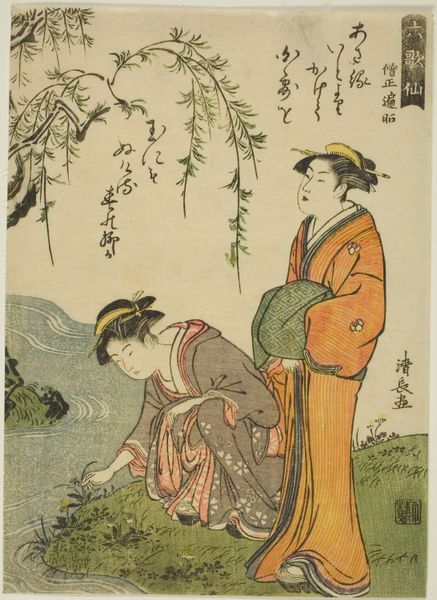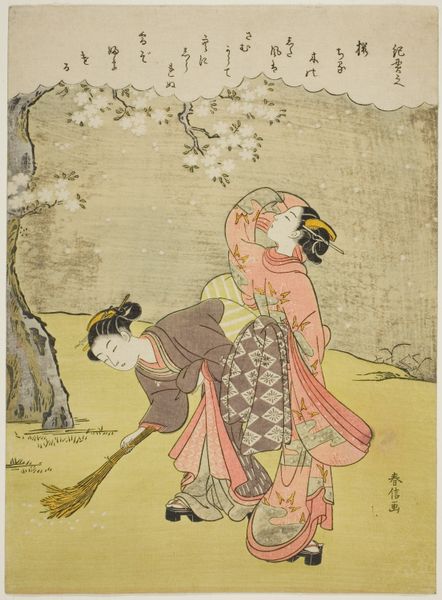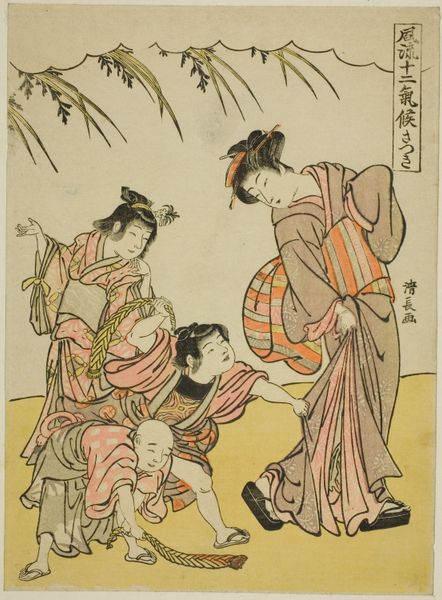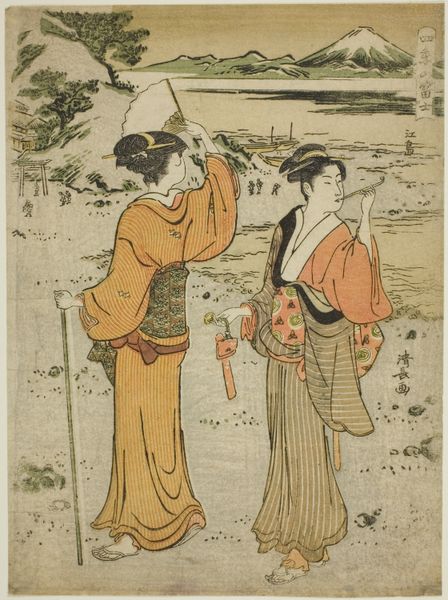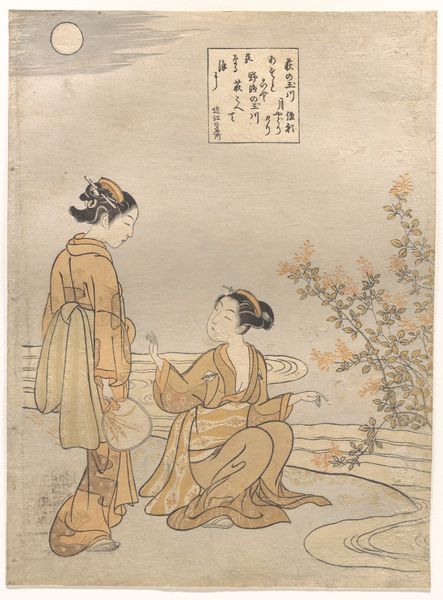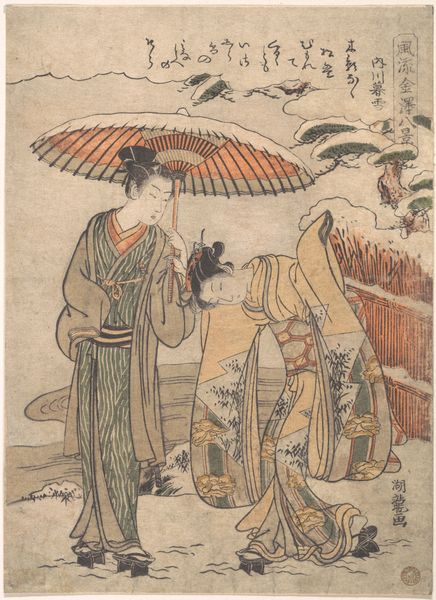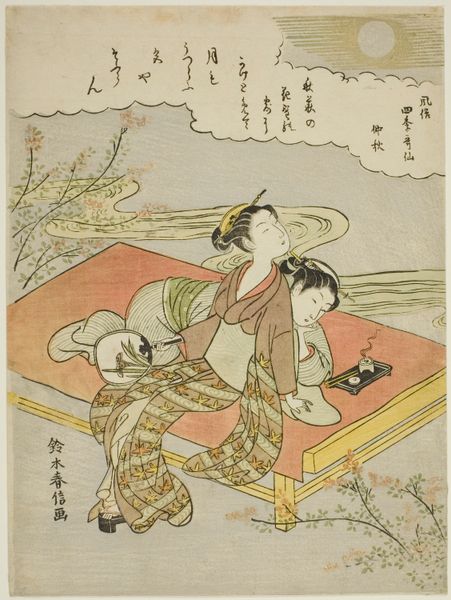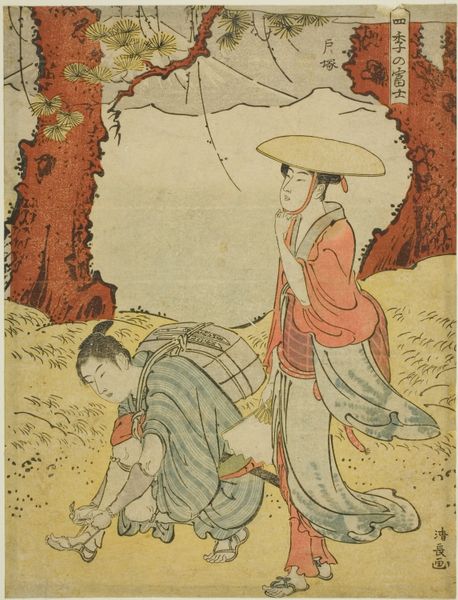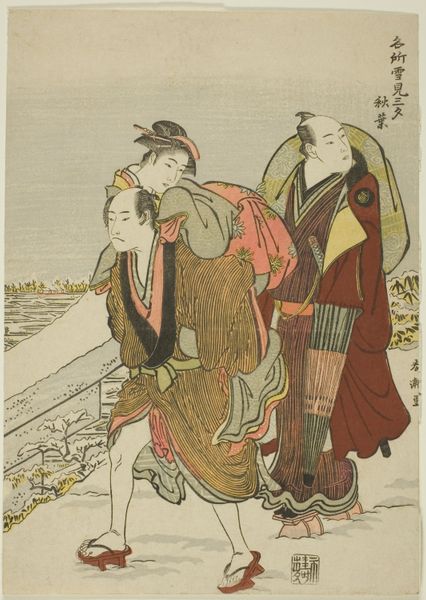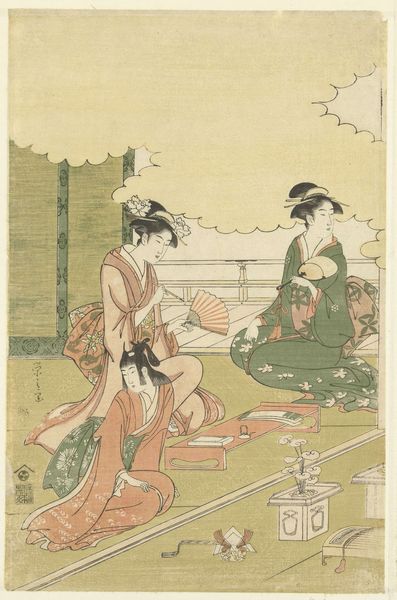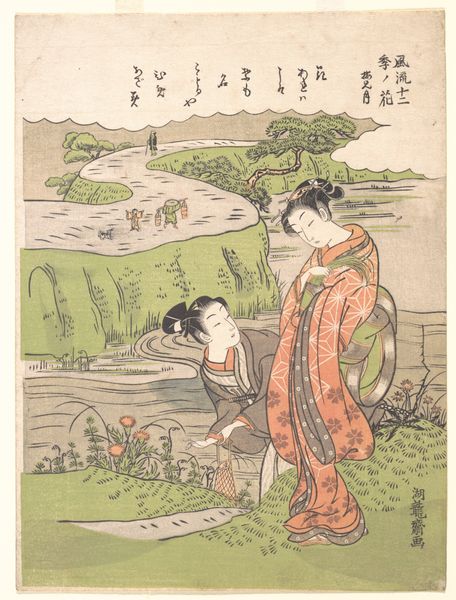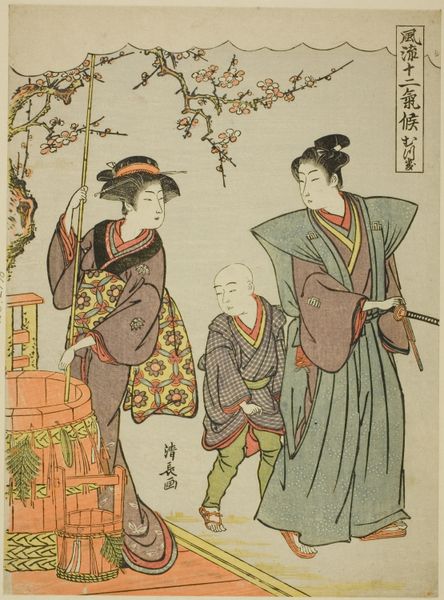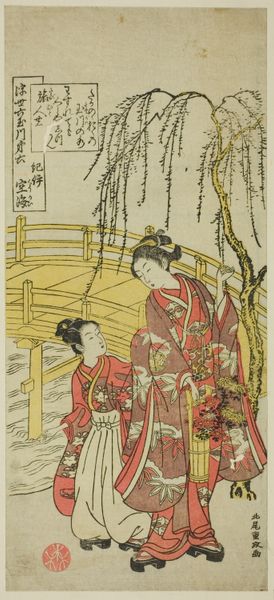
The Ide Jewel River in Yamashiro Province (Yamashiro Ide no Tamagawa), from an untitled series of Six Jewel Rivers c. 1785
0:00
0:00
print, woodblock-print
#
toned paper
# print
#
asian-art
#
landscape
#
ukiyo-e
#
japan
#
figuration
#
woodblock-print
Dimensions: 32.4 × 21.9 cm (12 3/4 × 8 9/16 in.)
Copyright: Public Domain
Editor: So this is Rekisentei Eiri's "The Ide Jewel River in Yamashiro Province," a woodblock print from around 1785. There's a distinct sense of stillness, almost melancholy, in this composition, with the figures and the muted colors. What stands out to you when you look at it? Curator: What strikes me is how this print, seemingly a tranquil landscape, can be interpreted through the lens of social commentary. The Jewel Rivers were celebrated in poetry and art, often linked to idealized feminine beauty. But Eiri was working during a time of increasing social stratification, when sumptuary laws attempted to rigidly define roles. Consider the figures here - a woman on horseback, likely of a higher social standing, being assisted by another, seemingly lower class woman. Editor: Yes, that distinction is interesting. I hadn't considered the class implications. Curator: Does this dynamic evoke ideas about power and access? Is the print merely aestheticizing existing social structures, or is it subtly questioning them? The "floating world" genre of Ukiyo-e often depicts the pleasures available to the elite, but simultaneously reveals the constructedness of those privileges and the labour that makes them possible. Who are these women in relation to each other, and what power structures are at play here, literally supporting the elevated class? Editor: So, the artist might be suggesting there is something artificial or even exploitative behind these leisurely moments? Curator: Precisely. How does the imagery challenge the notion of an untouched landscape when human relationships—and very unequal ones— are so central to the scene? How are we complicit as viewers, separated by time and culture, in this dynamic of looking? Editor: This makes me reconsider the whole scene. I now wonder about all the unspoken elements that may be present. Thanks for expanding my perspective! Curator: And thank you for opening up to this intersectional reading, which I think makes us more attuned to the world, past and present.
Comments
No comments
Be the first to comment and join the conversation on the ultimate creative platform.
